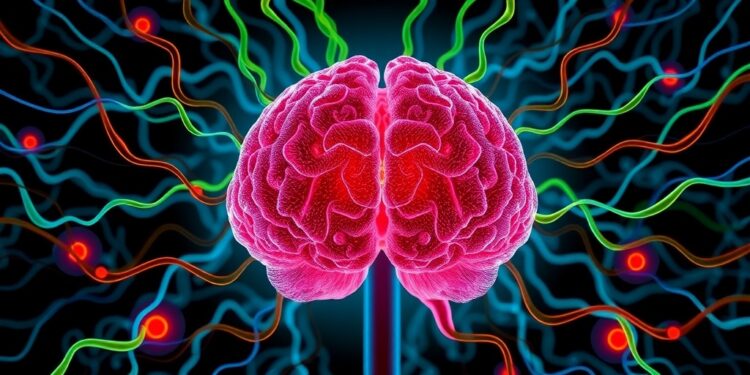A groundbreaking study by Princeton neuroscientists offers fresh insights into how the brain synthesizes various sensory cues during decision-making processes. This research, set to be published in the prestigious journal Nature Neuroscience, introduces a novel mathematical framework that may not only deepen our understanding of cognitive functions but could also pave the way for advancements in treating neurological disorders like Alzheimer’s disease. Additionally, this framework promises to enhance the decision-making capabilities of technologies such as artificial intelligence, including digital assistants and autonomous vehicles.
The study highlights the complexities of sensory integration experienced by individuals in everyday scenarios, such as commuting. As one navigates through an urban environment, myriad visual and auditory signals compete for attention, particularly when it comes to critical safety decisions. The central question addressed by this research is how the human brain is capable of managing and reconciling these conflicting signals to arrive at an informed decision.
At the core of this exploration is the prefrontal cortex—a region well-regarded as the epicenter of higher cognitive functions. This area of the brain is essential for managing the intricate interplay of sensory information, yet its specific mechanisms remain poorly understood. Previous research has illuminated the multifaceted nature of neuronal responses within this region, revealing that neurons may only activate under particular conditions. For instance, a neuron might fire in response to a visual signal indicating “go” while simultaneously suppressing other signals that might distract from that decision, rendering a clear example of the complexities at play.
Traditional mathematical models used to decipher the link between neural dynamics and decision-making behavior have often fallen short, primarily due to their complexity and lack of interpretability. Recurrent neural networks, which are popular for simulating neural circuits, possess intricate interconnected units that function well in mimicking brain activity but are difficult to analyze. The nuances of these models may obscure fundamental mechanisms of decision-making, leading to contextually rich but analytically opaque frameworks.
This new study introduces what researchers refer to as the latent circuit model, a streamlined approach that seeks to simplify the understanding of decision-making within large neural networks. Rather than perceiving the neural network as an overwhelming amalgam of interconnected units, Langdon and Engel advocate a more focused view—one that identifies key cellular connections that dominate neuronal behavior and influence outcomes. This “tree rather than forest” perspective offers a compelling avenue for understanding cognitive processes by spotlighting crucial contributors to brain activity.
The researchers initially validated their hypothesis by applying the latent circuit model to recurrent neural networks engaged in a context-dependent decision-making task. This task—a staple in neuroscience research—entails participants identifying specific parameters after being presented with context cues. By assessing how various sensory signals impact decision-making, the researchers could establish a more nuanced understanding of the underlying neural mechanisms at play.
Through this lens, they discovered that when subjects focused on a motion cue, the neural responses shifted significantly. The prefrontal cortex cells responsible for processing motion effectively turned off those engaged with color discrimination, exemplifying the brain’s ability to prioritize certain information over others based on context. This finding underscores the dynamic nature of decision-making circuitry and opens avenues for further inquiry into how similar mechanisms operate across various tasks.
The implications of these findings extend beyond theoretical understanding; they offer practical insights into improving cognitive functions in both humans and artificial systems. By unraveling the mathematical computations underlying decisions, there lies potential for addressing difficulties faced in mental health conditions, including attention deficit hyperactivity disorder, anxiety, and depression, where cognitive processing often becomes impaired.
The latent circuit model presents a pathway for improving the decision-making capabilities of artificial systems, from virtual assistants like Alexa to self-driving vehicles. Such applications rely heavily on the ability to interpret and prioritize multiple sources of information rapidly. By mimicking the brain’s inherent capacity to navigate complex sensory landscapes, we may enhance the effectiveness of AI interfaces that assist users in real-life situations.
The investigation also paves the way for applying this new model across a broader array of decision-making tasks typically encountered within experimental settings. The hope is that similar latent structures will emerge within controlled datasets, providing richer insights into how diverse cognitive processes are realized neurally. As this model gets deployed in experiments, it may lead to more refined technologies capable of operating seamlessly in dynamic environments.
In conclusion, the latent circuit model represents a significant step forward in our understanding of neural processes underlying decision-making. By clarifying the intricate relationships between neural activity and behavior, future applications of this research could not only improve clinical outcomes for various neurological conditions but also enhance the capacity of artificial intelligence to support human decision-making effectively. The ramifications of this study could reshape both clinical neuroscience and AI, establishing a more profound connection between biological understanding and technological innovation.
In the ever-evolving landscape of neuroscience and artificial intelligence, continued exploration into these latent mechanisms will prove vital for unlocking the complexities of both human cognition and intelligent machines. As we venture further into this uncharted territory, the insights gained may transform our approach to mental health, cognitive enhancement, and the development of next-generation AI systems designed to assist and enrich human life.
Subject of Research: People
Article Title: Latent circuit inference from heterogeneous neural responses during cognitive tasks
News Publication Date: 10-Feb-2025
Web References:
References:
Image Credits:
Keywords: Decision making, Mathematical modeling




